The neatest, prettiest, most Italianate small displacement pre-war coupe ever made.
In one sense, the paltry 998 cc 36 hp Fiat Balilla Mille Miglia Berlinetta Coupe is much ado about very little. In another sense, it is the quintessential example of prewar Italian design in miniature and very nearly takes your breath away. And the name is no auction house hype; Mille Miglia Berlinetta it was from the day it rolled out of the factory in 1935.
If looks aren’t enough, consider that the ultra-rare MM Berlinetta may be one of the first true Grand Touring cars ever conceived, and most certainly one of the first small displacement GT cars ever built.
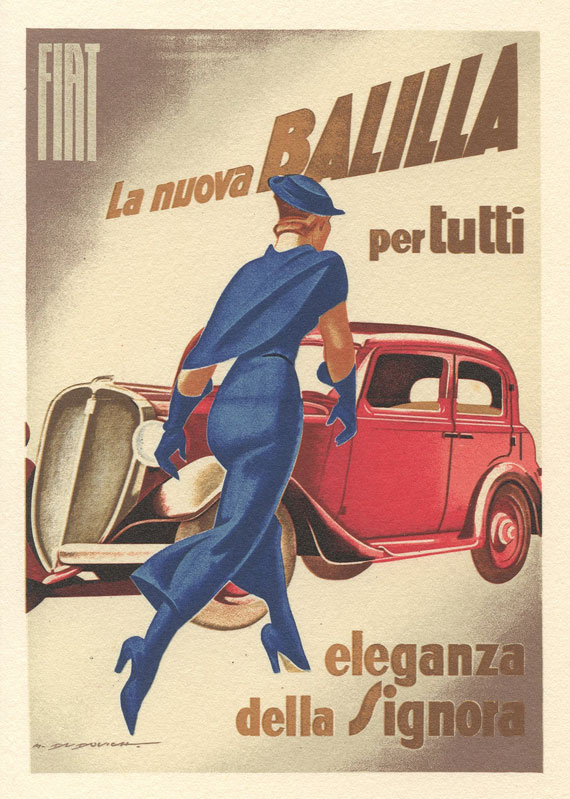
One of the colorful Balilla Fiat ads of the era. In this particular version, the sleek woman had on a much shorter dress, until that is, the Vatican saw the ad, and the hemline was lowered immediately and considerably.
The famed Balilla Berlinetta and Spiders hailed from the humblest of origins. The Fiat Balilla 508 was presented at the 1932 Milan Auto Show. It was ahead of its time, however, with a 12 volt electrical system, four wheel hydraulic brakes, and a three speed gearbox. The flathead 995 cc engine developed by Bartolomeo Nebbia put out a promising 22 hp out of the box.
Though the stock displacement never changed, the Balilla 995cc engine grew in horsepower and torque through the years primarily due to the change to an overhead valve head, and cam and piston developments.
Preceding the artful Berlinetta were the two Balillas Spiders, the cycle-fendered Corsa, also known as the “Coppa de Oro” and the Sport, which had more streamlined fenders. The Corsa and Sport Spiders were unveiled at the 1933 Milan Auto Show. Not only were the pair immediately successful in the hands of Italy’s gentleman drivers, the Ghia styling as executed by Fiat, was more than reminiscent of the top-of-the line Alfa Romeo 1750 Gran Sport with their beautiful Zagato and Touring bodies, right down to the boat-tail and central tail fin.
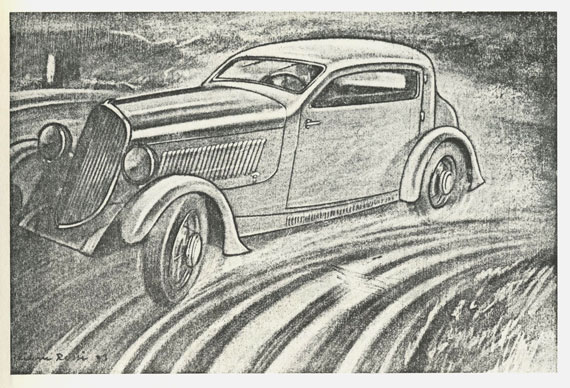
Ghia not only designed the impressive Balilla Corsa and Sport spiders, but created this 1933 Balilla Belinetta. Putting it in the hands of Siata wizard Giorgio Ambrosini was icing on the cake. It finished third in the heavily contested 1100cc class in the Mille Miglia.
The factory designed and built Balilla Mille Miglia Berlinetta was not launched until late in 1935, but two interesting Balilla coupes had already made appearances in the Mille Miglia. Perhaps inspired by the Alfa Romeo Touring coupes which placed well in the 1931 and 1932 events, Ghia designed a streamlined Fiat Balilla coupe for the 1933 Mille Miglia – which out of sixty-nine starters, twenty-five were Balillas. The Ghia Berlinetta was also an advance design, with a severely raked windshield. The 995 cc car had to be classed with the 1100s, yet the team of Giorgio Ambrosini (Mr. Siata) and Dante Menchetti took a third in class behind the much faster MG K3 Magnettes.
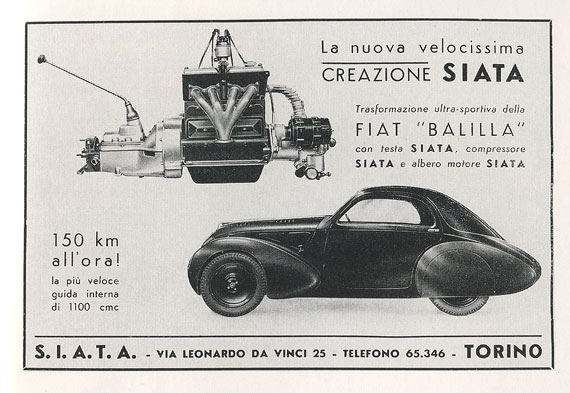
Encouraged by this Mario Revelli de Beaumont-designed Siata Fiat Berlinetta seen here on a Siata advertisement, Fiat decided to finally build its own version of the Mille Miglia Berlinettas.
In 1935, another type of Berlinetta made itself famous at the Mille Miglia. The dynamic duo of Ambrosini and Nuccio Bertone drove one of two very special 1060 cc supercharged Berlinetta Aerodinamicas, with special body designed by Mario Revelli de Beaumont. Although they both retired, according to “Otto Vu” author Tony Adriaensens, the Siata Berlinetta encouraged Fiat to build their own in-house product.
Hence the Fiat 508S Balilla Berlinetta Aerodinamica aka “Mille Miglia”. According to “La Fiat va alla Mille Miglia” by Cancellieri and Marchiano, “..the Balilla Berlinettas (were) produced by FIAT itself. This solution was introduced (chosen, or preferred) in an attempt (so as) to create a cockpit as much comfortable as possible for endurance racing (literally for races that were to be held over long distances) in events such as the Mille Miglia.”
Although built in much smaller numbers, the Balilla Berlinetta is much more expressive than its sister Spiders. With its stunning looks and seductive styling (one of the major attractions of a coupe was that women were much more inclined to come aboard, being thusly protected from the wind and elements) the Aerodynamica is in another class altogether. The design is dominated by ornate shapes and motifs, all of which seemed to go together amazingly well and the proportions are perfect.
By 1935, the Balilla range already was equipped with a four-speed transmission and an overhead valve head. The Berlinetta 508CS was equipped with a four speed transmission (with delightful, virtually perfect ratios), an overhead valve engine with a basic 36 hp (tuners would easily achieve 50 hp sans supercharger) and would do 0-50 in 18.6 seconds, and cruise at about 70 mph.
But by 1936, the first year a factory built Berlinetta Mille Miglia could have raced the legendary 1000 miles around Italy, the Balilla was getting a bit outdated, although Balillas easily won the unsupercharged 1100cc class and were clocking over 78 mph on the straights. For 1937 the 1100cc Millecento replaced the Balilla on both the road and track, and with independent front suspension and a new overhead valve engine of 1089 cc totally outclassed the old Balilla. It was an icon which eagerly and successfully carried on the tradition of a small displacement Grand Touring car.
Production numbers are pure guesstimates but the current owner’s thoughts of about 11 could be in the ballpark. The Spiders sold very well, but the Berlinettas were introduced towards the end of the Balilla line, and catered to a very specific clientele. After all, if one wanted to be competitive in class, one had to have a bit more than just a factory car. But by early 1937 the Millecento had made both the Balilla Spiders and the Berlinetta obsolete.
The car in our photos was originally owned by the mayor of Milan and stayed in Italian hands until it was sold at the Christie’s Monte Carlo auction in 1998. The next owner from Chicago kept it until recently. It has its FIVA book and registered with the ASI (Automobile Storica Italiano). It has owner’s book in Italian and English. It still has a Milan, Italy license plate. It has been in the retro Mille Miglia several times and won 1st place in its class in 1994.
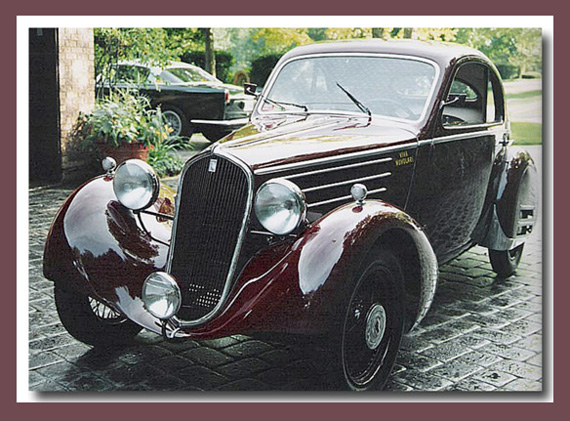
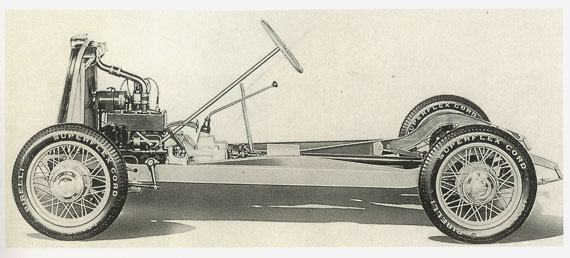
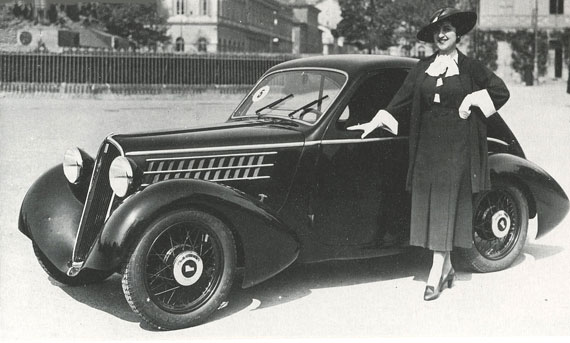
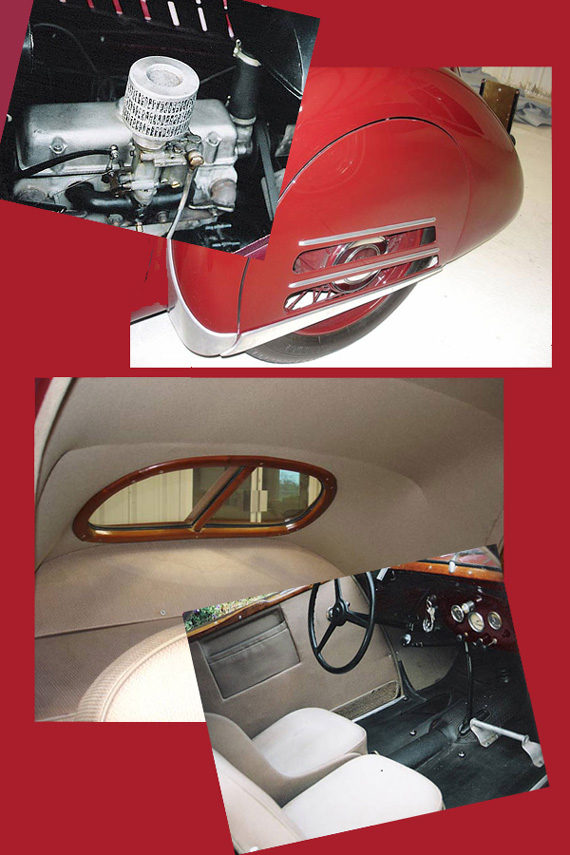
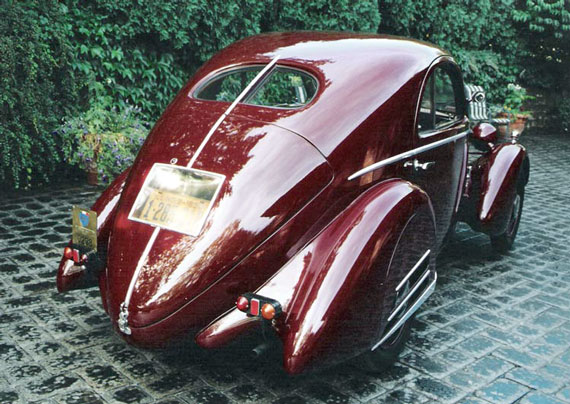
Very cool little car. As one who likes small short wheelbase cars and early Alfa Romeos bodied by Touring and Zagato, I would also vote to have one in my driveway.
Wonderful car, and nice to see an example of a true thirties classic with a competition pedigree that came from humble beginnings yet can stand next to any Pebble Beach Superstar with pride.
As is often the way whenever I come across a car I am not familiar with I start digging further. Curiosity can lead to an awful lot of wasted time, but in this case I was surprised to find a connection with a regular hero of the pages of VeloceToday.
A young Paris domiciled Italian, Amédée Gordini designed his own alloy cylinder head and created a 508S speedster that won the ‘Bol d’Or’ 24 hour race outright in 1935 hence the ‘Coppa d’Oro’ tag often applied to the 508S thereafter.
FIATs at the time were being built under licence by Simca at Suresnes, and this was the start of what was to become the Formula One team of the fifties.
The Coppa D’Oro name refers to the Coppa D’Oro del Littorio, a crazy 8-day, 6000km, 3-stage race dreamed up by the fascists to run across the whole of Italy . Staged only once in 1934, Fiat won the 11oocc class and, thus, adopted the name.
I stand corrected on the origin of the Coppa d’Oro tag, I was quoting Michael Sedgwick from Automobile Quarterly V5#4, who stated it was named after the Bol dOr. I like to learn something new every day!
I agree, park it in my garage, I’ll move something out. I would lose the center headlight, though. The rear view is much better than the front, not a comment we can often make (about cars). The wood details on the interior – especially the rear window trim – are beautiful. Italians design cars with soul.
I too would covet this in my driveway. Anyone out there know what this car is now worth?
Love those art deco posters and this one has a very attractive lady. Seems like the French and Italians had the best posters from about ’35 to ’40. The war ruined everything.
If you like those look up the ones by Cassandre
real name Adolphe Mouron, particularly ones for French Line.
Editor: Let me know if there’s interest, I’ll do a poster story…
Pete, your outdoor color photos of the FIAT were done in Dennis Machul’s driveway in Oak Brook, Ill. around the year 2000. Dennis had the body and paint work done by Skip McCabe, Mundelein, Ill. about that time. By the way, the Ferrari Boano in the first outdoor picture is chassis no. 0669 GT, one of Dennis’s several Ferraris.
Alan
Thanks Alan, and great to hear from you again! Yes, the article is quite old now…all four this week were from the distant past.
Pete
Hello.
The car is for sale at an Italian classic car dealer, called Auto Class.
Here is the link.
http://www.auto-class.net/schede/210
Very pretty car. I would love to own it.
Excelent article Peter, the old Balillas living in the heart. I have 81, but remember very well the cars. Here are one in the museum. Thanks Peter for your articles that are very very good. Luis.—–